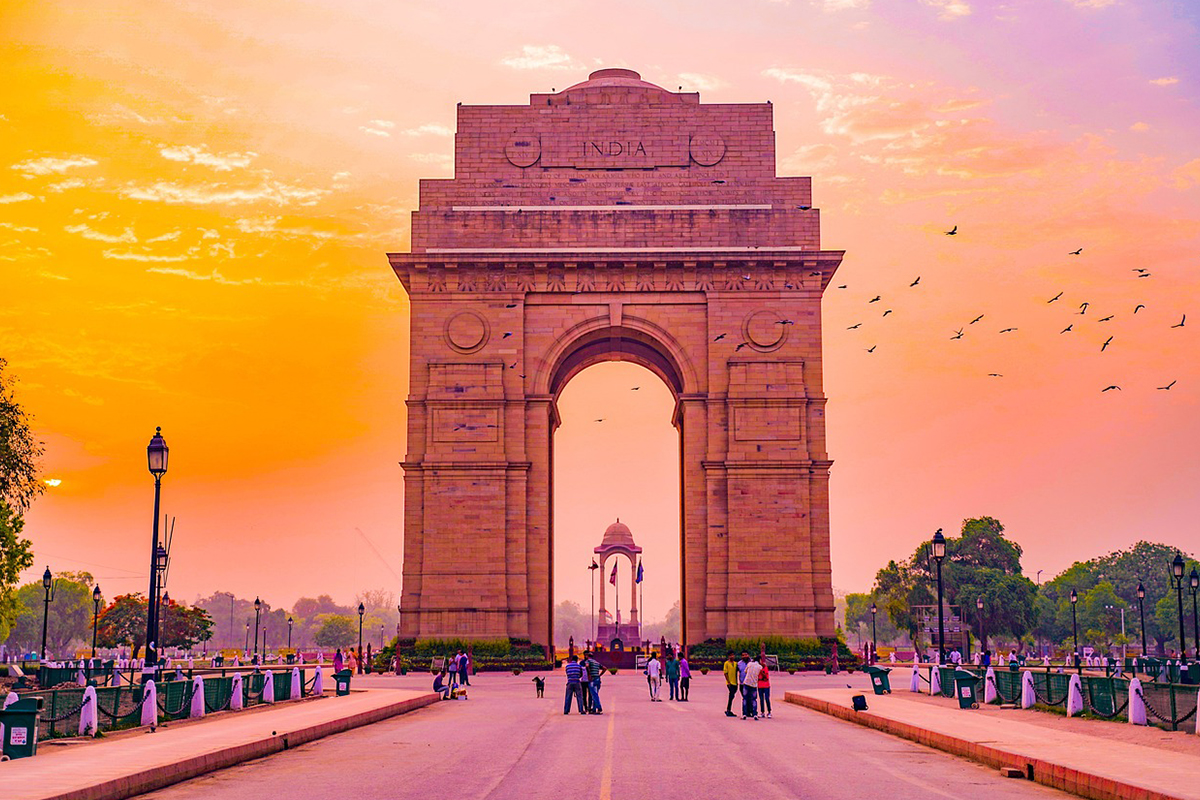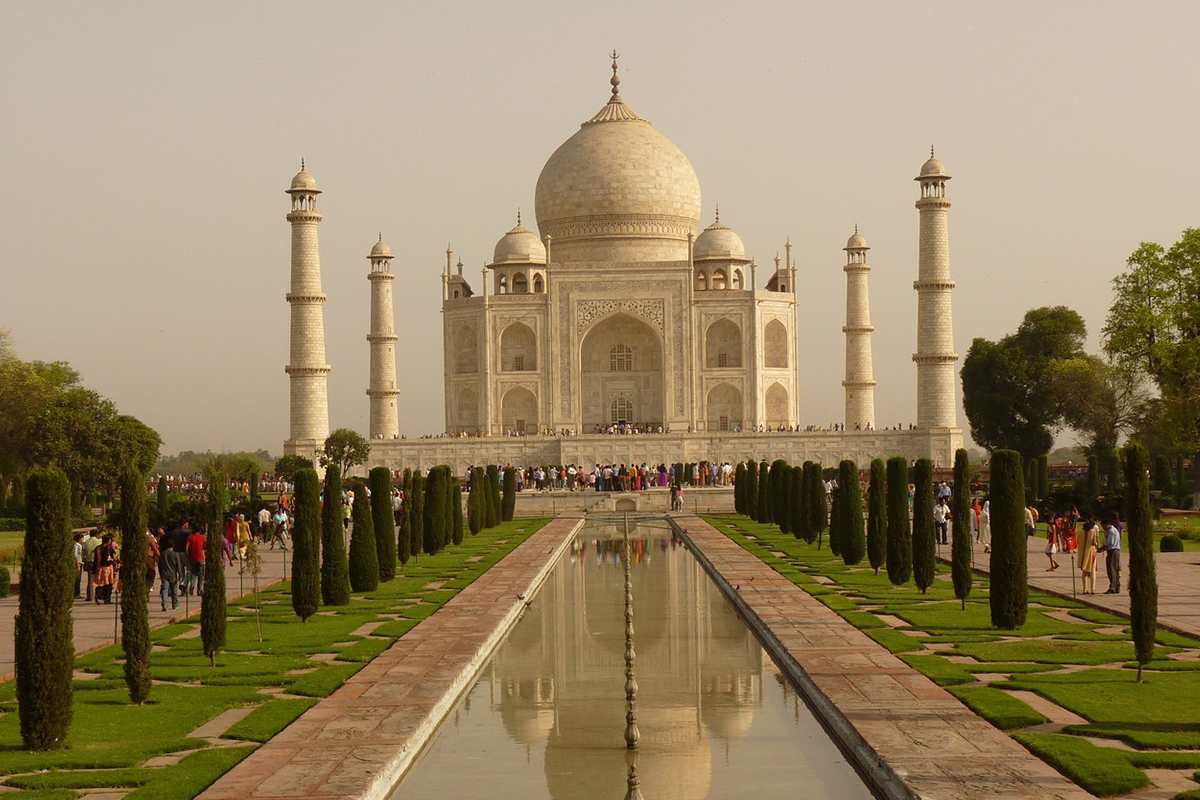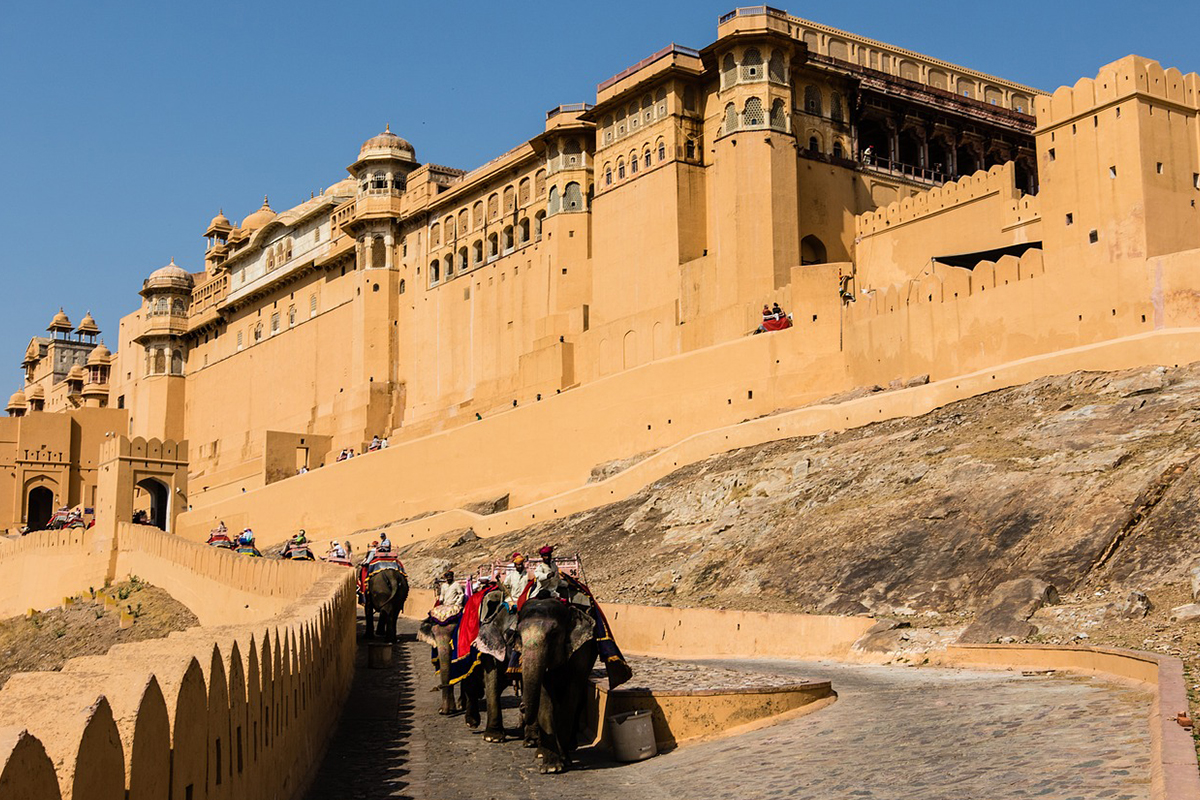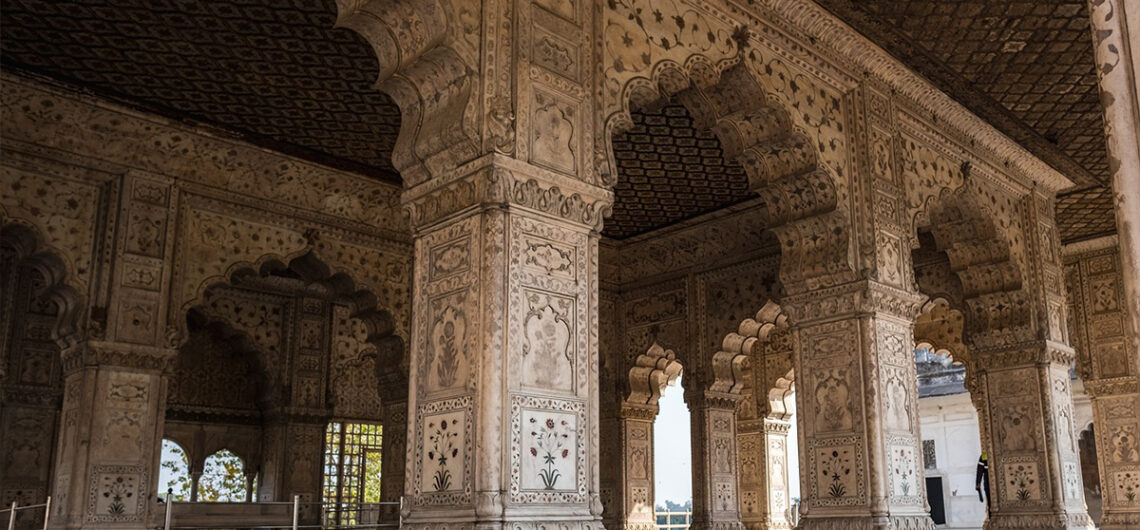Best Golden Triangle Tour Packages Uncovering the Beauty of Delhi, Agra and Jaipur , Imagine a journey through the rich tapestry of history, culture, and architectural marvels. Picture yourself standing in awe in front of the magnificent Taj Mahal, a symbol of eternal love. Envision exploring the bustling streets of Delhi, where ancient traditions mingle with modernity. Visualize the vibrant colors of Jaipur, the Pink City, where every corner holds a surprise. This is the essence of the Golden Triangle tour, an experience that unravels the beauty of Delhi, Agra, and Jaipur.
The Golden Triangle in India is a popular tourist circuit that showcases some of the country’s most magnificent destinations. From the bustling metropolis of Delhi to the iconic Taj Mahal in Agra and the vibrant city of Jaipur, this tour offers a tantalizing glimpse into the rich history and culture of northern India. With its diverse range of attractions, it is no wonder that the Golden Triangle tour packages have become a sought-after choice for travelers around the world.
Delhi, the starting point of this mesmerizing journey, serves as a gateway to India’s fascinating past and promising future. As you explore the narrow lanes of Old Delhi, you will be transported to a bygone era, where ancient Mughal architecture and heritage sites reign supreme. From the majestic Red Fort and Jama Masjid, the largest mosque in India, to the vibrant bazaars of Chandni Chowk, Delhi offers a captivating blend of tradition and modernity.
Agra, the second stop on the Golden Triangle tour, is home to one of the Seven Wonders of the World – the Taj Mahal. This architectural marvel, built by Mughal Emperor Shah Jahan in memory of his beloved wife, is a testament to the power of love and an iconic symbol of India. As you stand before the white marble symphony of domes and minarets, you will be captivated by its exquisite beauty and timeless elegance. Agra also boasts other architectural gems such as the Agra Fort and the hauntingly beautiful tomb of Itmad-ud-Daulah, known as the “Baby Taj.”
The tour culminates in the enchanting city of Jaipur, also known as the Pink City. As you step foot in Jaipur, you will be greeted by a cityscape adorned with palaces, forts, and vibrant hues of pink, a color associated with hospitality. Marvel at the grandeur of the Amber Fort, a majestic hilltop fortress that offers panoramic views of the surrounding landscape. Explore the intricately designed City Palace and Hawa Mahal, the Palace of Winds, where royal women once observed the festivities on the streets below. Immerse yourself in the bustling markets of Jaipur, where you can shop for traditional textiles, jewelry, and handicrafts.
By embarking on the Golden Triangle tour, you will not only witness the grandeur of historical monuments but also experience the warmth and hospitality of the Indian people. Each city on this journey offers a unique blend of flavors, sights, and sounds that will leave an indelible mark on your heart and soul. Whether you are a history enthusiast, an architecture lover, or a cultural explorer, the Golden Triangle tour is sure to be a captivating and rewarding adventure.
Embark on a voyage of discovery as you uncover the beauty of Delhi, Agra, and Jaipur. Let the Golden Triangle tour packages take you on a journey through time, where the rich heritage of India comes alive at every turn. Immerse yourself in the vibrant culture, marvel at the architectural wonders, and create memories that will last a lifetime. Get ready to be enchanted by the Golden Triangle, an experience that will leave you mesmerized and longing for more.
Contents
- 1 Best Golden Triangle Tour Packages Introduction
- 2 Historical Significance of Delhi
- 3 Exploring the Glorious Taj Mahal in Agra
- 4 The Majestic Forts and Palaces of Jaipur
- 5 Cultural Experiences in Delhi
- 6 Art and Architecture in Agra
- 7 Traditions and Festivals in Jaipur
- 8 Golden Triangle Tour a Journey of a lifetime experience
Best Golden Triangle Tour Packages Introduction
The golden triangle tour of Delhi, Agra, and Jaipur is one of the most popular and enchanting travel routes in India. This captivating journey takes travelers on a cultural and historical adventure, showcasing the rich heritage, architectural marvels, and vibrant traditions of these three incredible cities. With its amalgamation of ancient landmarks, bustling markets, and royal palaces, the golden triangle tour offers a unique and unforgettable experience for both domestic and international tourists.
The golden triangle tour begins in Delhi, the capital city of India. Delhi is a melting pot of history and modernity, where ancient forts and mosques coexist with contemporary shopping malls and bustling streets. Travelers can explore the iconic Qutub Minar, the towering symbol of Delhi’s rich history, or visit the impressive Red Fort, a UNESCO World Heritage Site. The bustling streets of Old Delhi offer a sensory treat, with their vibrant bazaars, delicious street food, and traditional architecture. From ancient temples to bustling markets, Delhi will leave visitors mesmerized by its eclectic mix of cultures and traditions.
The next stop on the golden triangle tour is Agra, home to the magnificent Taj Mahal. Regarded as one of the New Seven Wonders of the World, the Taj Mahal is an architectural masterpiece that attracts millions of visitors each year. Its pristine white marble, intricate carvings, and stunning gardens create a backdrop of beauty and romance. Apart from the Taj Mahal, Agra also houses other significant landmarks such as Agra Fort and Fatehpur Sikri. These historic structures provide glimpses into the grandeur and opulence of the Mughal era.
The final leg of the golden triangle tour takes travelers to Jaipur, the vibrant capital of Rajasthan. Known as the “Pink City,” Jaipur is famous for its stunning palaces, majestic forts, and vibrant markets. The majestic Amber Fort, located on the outskirts of the city, stands tall as a reminder of Rajasthan’s glorious past. The City Palace and Hawa Mahal, with their intricate architecture and stunning craftsmanship, are must-visit sites in Jaipur. The city’s bustling bazaars offer a treasure trove of textiles, jewelry, and traditional handicrafts, allowing visitors to immerse themselves in the rich Rajasthani culture.
The golden triangle tour packages offer a well-curated itinerary, ensuring that travelers get the most out of their visit to Delhi, Agra, and Jaipur. These packages include comfortable accommodations, guided tours, transportation, and ample time to explore the key attractions of each city. With its rich history and architectural wonders, the golden triangle tour is a perfect introduction to the cultural diversity and heritage of India.
Overall, the golden triangle tour of Delhi, Agra, and Jaipur offers an extraordinary blend of history, art, and culture. From exploring the bustling streets of Delhi to witnessing the magnificence of the Taj Mahal and experiencing the vibrant ambiance of Jaipur, this tour is a feast for the senses. Whether you are a history enthusiast, architecture lover, or simply someone seeking a unique travel experience, the golden triangle tour packages are sure to leave you spellbound and provide memories that will last a lifetime.
Historical Significance of Delhi

Delhi, the capital city of India, holds immense historical significance. With a legacy that spans over centuries, the city has witnessed the rise and fall of several empires, leaving behind a rich tapestry of historical monuments and cultural heritage. Exploring the historical attractions of Delhi is like embarking on a journey through time, uncovering the layers of its past and understanding its role in shaping the country’s history.
The Mughal Era:
One of the most iconic periods in Delhi’s history is the Mughal era. The Mughals, known for their love of art, architecture, and grandeur, left an indelible mark on the cityscape. The majestic Red Fort, a UNESCO World Heritage Site, stands as a testament to their architectural brilliance. Built by Emperor Shah Jahan in the 17th century, the Red Fort showcases a perfect blend of Persian, Islamic, and Indian architectural styles.
Another masterpiece of Mughal architecture is the Humayun’s Tomb. This historic mausoleum, commissioned by Emperor Humayun’s widow, Empress Bega Begum, is considered a precursor to the Taj Mahal and is known for its intricate design and splendid marble work.
The British Raj:
Delhi’s history also includes the period of British rule in India. The British established their stronghold in Delhi during the 19th century and made significant contributions to its urban development. The grandeur and colonial charm of buildings, such as the India Gate and the Parliament House, bear witness to this era.
The India Gate, a war memorial built in memory of the Indian soldiers who sacrificed their lives in various wars fought by the British Empire, stands tall as a symbol of sacrifice and patriotism. The Parliament House, an architectural marvel, represents the democratic institutions that took shape during the British Raj.
The Ancient City of Indraprastha:
Delhi’s historical significance goes beyond the Mughal and British eras. According to ancient Hindu scriptures and legends, Delhi is believed to be the site of the ancient city of Indraprastha, established by the Pandavas from the epic Mahabharata. Though there is limited archaeological evidence, the association with ancient mythology adds a mythical charm to the city’s history.
The Sultanate Period:
Before the Mughal era, Delhi was under the rule of various dynasties during the Sultanate period. The Qutub Minar, a towering minaret dating back to the 13th century, is the most prominent architectural marvel of this era. The intricate carvings and the beautiful calligraphy adorning the Qutub Minar reflect the rich Islamic heritage of the time.
Conclusion:
Delhi’s historical significance lies in its ability to preserve and showcase the diverse layers of its past. From the grandeur of the Mughal era to the architectural legacy of the British Raj and the mythical charm of ancient Indraprastha, the city offers a unique blend of history and cultural heritage. Exploring the landmarks and monuments of Delhi is not only a journey through time but also an opportunity to understand the city’s role in shaping India’s rich history.
Exploring the Glorious Taj Mahal in Agra

One of the most iconic landmarks in the world, the Taj Mahal stands as a testament to the power of love and the architectural prowess of the Mughal Empire. Located in the historical city of Agra, the Taj Mahal is a must-visit destination for travelers on the Golden Triangle tour.
A Symbol of Love and Beauty
The Taj Mahal, built by Emperor Shah Jahan as a mausoleum for his beloved wife Mumtaz Mahal, is a masterpiece of architectural design and craftsmanship. Constructed entirely out of white marble, the monument is known for its impeccable symmetry and intricate details. The Taj Mahal is a symbol of eternal love and devotion, and its ethereal beauty attracts millions of visitors each year.
Soaking in the Grandeur
As visitors enter the complex, they are immediately struck by the grandiosity of the Taj Mahal. The massive entrance gate, made of red sandstone, leads to a pristine garden in the Charbagh style, perfectly divided into four quadrants. Walking through the ornate gate, one is greeted by the sight of the monument gleaming in the distance, reflecting in the serene pool of water.
The main mausoleum stands tall in the center, flanked by four minarets on each corner. The intricate marble inlay work, showcasing floral patterns and calligraphy, is a testament to the exquisite craftsmanship of the artisans. The white marble changes its hues with the shifting sunlight, lending an ethereal glow to the structure. Inside the main chamber lies the beautiful cenotaphs of Shah Jahan and Mumtaz Mahal, adorned with precious gems and inscriptions from the Quran.
Capturing Timeless Moments
Visitors should take their time to explore the complex, as there are numerous angles and perspectives from which to capture the beauty of the Taj Mahal. From the grand archways to the reflection pool, every turn provides a different view of this architectural marvel. Whether it is during sunrise or sunset, the changing light casts a magical spell on the white marble, creating memorable photo opportunities.
Immersion in History and Culture
Beyond its visual splendor, the Taj Mahal also offers insights into the fascinating history and culture of the Mughal Empire. The onsite museum houses various artifacts from that era, including miniature paintings, calligraphy, and architectural plans. Visitors can delve into the stories of Shah Jahan, Mumtaz Mahal, and the architectural genius behind this wonder of the world.
Preserving a Legacy
Recognizing the significance of this monument, the Indian government has taken measures to ensure its preservation. Strict regulations are in place to protect the Taj Mahal from air pollution and overcrowding. Visitors are required to follow certain guidelines, such as wearing shoe covers and refraining from touching the marble surfaces. These efforts aim to safeguard the magnificence of the Taj Mahal for generations to come.
A Life-Changing Experience
Exploring the Taj Mahal is not merely a sightseeing activity; it is an experience that touches the soul. The tranquil ambiance, the stunning architecture, and the stories of love and devotion create a profound impact on visitors. Standing in the presence of this architectural masterpiece, one cannot help but feel awe-inspired and humbled by the sheer beauty and grandeur of the Taj Mahal.
To truly understand the allure of the Taj Mahal, one must witness it firsthand. Its timeless beauty and captivating charm make it a must-visit destination for anyone traveling to Agra.
The Majestic Forts and Palaces of Jaipur

Jaipur, the vibrant capital city of Rajasthan, is known for its magnificent forts and palaces that showcase the grandeur of Rajput architecture and the rich cultural heritage of the region. Exploring these majestic structures is an essential part of any visit to Jaipur, as they transport you back in time to an era of opulence and valor.
Amber Fort (Amer Fort)
The impressive Amber Fort, also known as Amer Fort, stands majestically atop a hill overlooking the city. This sprawling fortress was built in the 16th century by Raja Man Singh I, a trusted general of Emperor Akbar. The fort’s intricate architecture, with its blend of Hindu and Mughal styles, is a sight to behold. Visitors can journey up the fort’s steep slope on a gentle elephant ride or choose to walk through the grand gates and explore its courtyards, palaces, and temples. Don’t miss the Sheesh Mahal (Hall of Mirrors), adorned with countless tiny mirrors that reflect light and create a mesmerizing effect.
Nahargarh Fort
Perched on the Aravalli hills, Nahargarh Fort offers breathtaking panoramic views of Jaipur city. Built in the 18th century by Maharaja Sawai Jai Singh II, this fort served as a retreat for the royal family. The fort’s impressive architecture, combined with its serene surroundings, makes it a popular spot for locals and tourists alike. Take a leisurely stroll through the halls and gardens, and imagine the opulent lifestyle enjoyed by the Rajput kings.
Jaigarh Fort
Located on the same hill as Amber Fort, Jaigarh Fort was built in the 18th century to protect Amber Fort and its treasures. This formidable structure features massive ramparts, watchtowers, and a cannon named “Jaivana,” which is believed to be the world’s largest cannon on wheels. The fort also houses a museum that displays the rich history and weaponry of the Rajput warriors. Don’t forget to walk along the fort’s walls and enjoy the scenic views of the surrounding countryside.
City Palace
The City Palace in Jaipur is an architectural marvel. Sprawling over a vast area, this palace complex blends Rajput and Mughal styles of architecture seamlessly. Built by Maharaja Sawai Jai Singh II, the palace complex comprises various courtyards, gardens, palaces, and museums. The opulent interiors, adorned with intricate artwork, delicate mirror work, and dazzling chandeliers, offer a glimpse into the lavish lifestyle of the royals. The palace complex also houses the Chandra Mahal, where the royal family resides, and the Mubarak Mahal, which now serves as a museum displaying a vast collection of royal costumes and artifacts.
Hawa Mahal
One of Jaipur’s most iconic landmarks, Hawa Mahal, or the “Palace of Winds,” is a unique architectural marvel. Built in the 18th century, this five-story palace is characterized by its honeycomb-like facade, adorned with intricately carved windows that allowed the royal ladies to observe the bustling street life below without being seen. The palace’s pink sandstone structure, a signature of Jaipur, adds to its allure. Climb to the top of the palace to enjoy panoramic views of the city and experience the cool breeze that inspired its name.
The forts and palaces of Jaipur not only showcase the architectural brilliance of the Rajput era but also offer a glimpse into the royal lifestyle and the rich history of this fascinating city. Visiting these majestic structures is a must for anyone eager to uncover the beauty of Jaipur and immerse themselves in its royal heritage.
Cultural Experiences in Delhi
Delhi, the capital city of India, is not only known for its rich history and stunning architecture but also for its vibrant cultural experiences. A visit to Delhi offers an immersive journey through the diverse heritage of the country. From exploring ancient monuments to indulging in street food and shopping, Delhi never fails to leave a lasting impression on visitors.
One of the must-visit cultural landmarks in Delhi is the magnificent Red Fort, a UNESCO World Heritage site. Built during the Mughal era, this grand fort showcases the architectural brilliance of the time. Visitors can take a stroll through its sprawling gardens and admire the intricate detailing on the walls and gates.
Another iconic cultural experience in Delhi is a visit to the Jama Masjid, one of the largest mosques in India. This stunning architectural masterpiece, constructed in the 17th century, is a true reflection of Mughal architecture. Visitors can witness the evening prayers and soak in the serene ambiance of the mosque.
For art enthusiasts, a visit to the National Museum is a must. This museum houses an impressive collection of artifacts and artworks from different periods of Indian history. From ancient sculptures to contemporary paintings, the museum offers a comprehensive insight into the country’s artistic heritage.
Delhi is also famous for its bustling street markets, where one can experience the vibrant colors and flavors of India. Chandni Chowk, located in the heart of Old Delhi, is a paradise for shopaholics and food lovers. This bustling market offers a wide range of traditional Indian clothing, jewelry, spices, and street food. Exploring the narrow lanes of Chandni Chowk is an adventure in itself, as one gets to witness the authentic local lifestyle.
In addition to these cultural experiences, Delhi also hosts various cultural festivals throughout the year. The International Kite Festival, Qutub Festival, and the Surajkund Crafts Mela are some of the major events that showcase the rich cultural diversity of the city. These festivals provide an opportunity to witness traditional music, dance performances, and crafts from different parts of India.
Exploring the cultural side of Delhi is incomplete without savoring its culinary delights. The city is famous for its street food, offering a plethora of flavors to tantalize your taste buds. From the savory chaat to the indulgent kebabs and the mouthwatering sweets like jalebi and rabri, Delhi offers a gastronomic experience like no other.
In conclusion, Delhi is a treasure trove of cultural experiences. From exploring magnificent historical monuments to indulging in local cuisine and witnessing vibrant festivals, Delhi offers a unique blend of tradition and modernity. A visit to Delhi promises to be a memorable journey through the heart and soul of India’s rich cultural heritage.
Art and Architecture in Agra
Agra, a city located in the state of Uttar Pradesh, India, is renowned for its rich heritage of art and architecture. As part of the Golden Triangle tour, Agra is a must-visit destination that allows travelers to explore its magnificent monuments and delve into the artistic and architectural history of the Mughal Empire.
The Taj Mahal: A Masterpiece of Mughal Architecture
Undoubtedly the most iconic symbol of Agra, the Taj Mahal stands as an epitome of love and architectural brilliance. Built by Emperor Shah Jahan in the 17th century, this mausoleum was dedicated to his beloved wife, Mumtaz Mahal. The Taj Mahal is a UNESCO World Heritage Site and is considered one of the New Seven Wonders of the World.
The architectural grandeur of the Taj Mahal is unparalleled. Its elegant white marble structure with intricate carvings, delicate inlay work, and perfectly symmetrical design showcase the mastery of Mughal craftsmanship. The breathtaking beauty of the Taj Mahal, especially during sunrise and sunset, leaves visitors awe-struck and mesmerized.
Agra Fort: A Marvel of Military Architecture
Another architectural gem in Agra is the Agra Fort, also known as the Red Fort of Agra. This majestic fort, constructed by Emperor Akbar in the 16th century, served as the main residence of the Mughal emperors. The Agra Fort, a UNESCO World Heritage Site, combines elements of Islamic, Persian, and Hindu architecture, creating a unique blend of styles.
The imposing red sandstone walls of the fort hide within them a treasure trove of palaces, gardens, mosques, and courtyards. The intricate marble work, geometric patterns, and intricate carvings found within the fort showcase the artistic brilliance of the Mughal era. From the Diwan-i-Am (Hall of Public Audience) to the Diwan-i-Khas (Hall of Private Audience), every corner of the Agra Fort reveals a fascinating story from history.
Fatehpur Sikri: The Abandoned Marvel
Located on the outskirts of Agra, Fatehpur Sikri is a UNESCO World Heritage Site that showcases the architectural genius of the Mughal era. Built by Emperor Akbar as a capital city in the late 16th century, Fatehpur Sikri was later abandoned, but its grandeur remains intact.
The architecture of Fatehpur Sikri is a blend of various influences, including Persian, Hindu, and Islamic styles. The magnificent Buland Darwaza, the Jama Masjid, and the Panch Mahal are some of the notable structures within the complex. The intricate carvings, vibrant tile work, and impressive architectural details make Fatehpur Sikri a must-visit for art and architecture enthusiasts.
Itimad-Ud-Daulah: The Jewel Box of Agra
Often referred to as the Baby Taj, Itimad-Ud-Daulah is a mausoleum that holds great historical significance. Built by Nur Jahan, the wife of Emperor Jahangir, in the 17th century, this structure is believed to have inspired the design of the Taj Mahal. Itimad-Ud-Daulah showcases intricate marble inlay work, delicate carvings, and Persian-inspired architecture.
The beauty of Itimad-Ud-Daulah lies in its delicate details and symmetrical design. The use of semi-precious stones for inlay work adds an element of opulence to this exquisite structure. Visiting Itimad-Ud-Daulah provides a glimpse into the artistic finesse and craftsmanship of the Mughal era.
The art and architecture of Agra offer a captivating journey into the opulence and grandeur of the Mughal Empire. The Taj Mahal, Agra Fort, Fatehpur Sikri, and Itimad-Ud-Daulah stand as remarkable testaments to the architectural brilliance and artistic prowess of the Mughals. Exploring these iconic structures allows visitors to unravel the rich history and cultural heritage of Agra, leaving them in awe of the marvels created by the Mughal emperors.
Traditions and Festivals in Jaipur
Jaipur, the vibrant capital of Rajasthan, is not only known for its palaces and forts but also for its rich cultural traditions and colorful festivals. The city’s deep-rooted traditions, passed down through generations, add to its charm and allure. Here are some of the most prominent traditions and festivals that make Jaipur a cultural extravaganza:
1. Teej Festival
Teej is one of the most widely celebrated festivals in Jaipur. It is dedicated to the goddess Parvati and commemorates her reunion with Lord Shiva. During this festival, women dress in traditional attire and participate in processions, dance performances, and cultural events. One of the highlights of Teej is the women swinging on decorated swings, which symbolizes their joy and happiness.
2. Gangaur Festival
Gangaur is a traditional festival celebrated by women in Rajasthan, including Jaipur. It is dedicated to the goddess Gauri, who symbolizes marital bliss. During Gangaur, women adorn themselves with beautiful jewelry and apply intricate designs of henna on their hands. The festival involves processions, music, dance, and the immersion of clay idols in water.
3. Elephant Festival
The Elephant Festival is a favorite among tourists and locals alike. On this day, decorated elephants are the stars of the show. They are lavishly adorned with colorful textiles, jewelry, and painted motifs. A grand procession takes place, with elephants, camels, horses, and folk dancers parading through the streets. It is a sight to behold and offers a unique experience to visitors.
4. Jaipur Literature Festival
The Jaipur Literature Festival is an international literary extravaganza that attracts renowned authors, poets, and literary enthusiasts from around the world. It is a platform for intellectual discussions, book reviews, and storytelling sessions. The festival also showcases traditional music performances, art exhibitions, and cultural programs.
Golden Triangle Tour a Journey of a lifetime experience
on a journey of a lifetime with our Best Golden Triangle Tour Packages, unveiling the captivating beauty of Delhi, Agra, and Jaipur. As the sun sets on this cultural odyssey, you’ll carry with you the echoes of history, the splendor of architectural marvels, and the vibrant tapestry of India’s diverse heritage. From the bustling streets of Delhi to the iconic Taj Mahal in Agra and the royal palaces of Jaipur, each moment is a brushstroke painting a vivid picture of India’s rich past. Join us in discovering the treasures of the Golden Triangle, where every step tells a story and every sight leaves an indelible mark on your heart. Your adventure awaits, promising memories that transcend time and beckon you back to the enchanting spirit of these three gems.
You can check out the best tour booking agency in India Taj Mirror on trip advisor and you can also book your golden triangle tour on our website


Comments